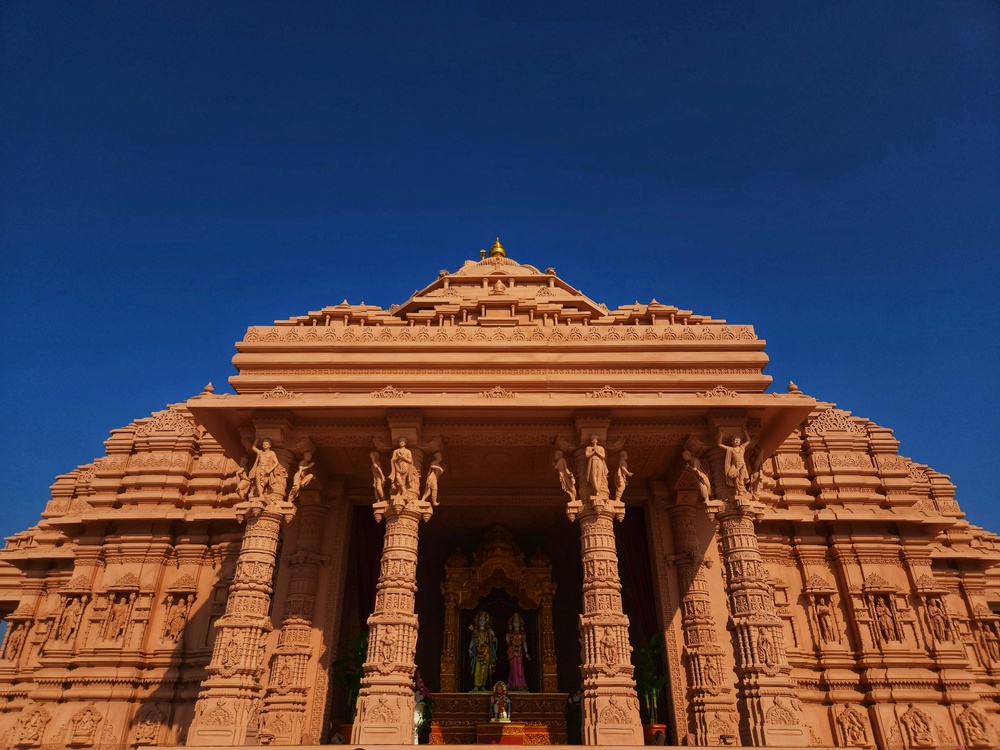Ayodhya, nestled along the banks of River Sarayu in Uttar Pradesh, is one of India’s most revered spiritual and historical cities. As the birthplace of Lord Rama and a land steeped in mythology and heritage, it draws pilgrims, cultural travellers, and history lovers alike. If you’re planning a journey that combines devotion, architecture, and timeless stories, here’s why these are the places to visit in Ayodhya for your next trip.
1. Ram Janmabhoomi Temple
At the top of the list of places to visit in Ayodhya is the grand Ram Janmabhoomi Temple, believed to be the birthplace of Lord Rama. Currently under construction with beautiful carvings and majestic pillars, it is set to become one of India’s most magnificent temples. Pilgrims flock here to seek blessings and witness rituals that revive the epic Ramayana, making it an essential destination for all spiritual travellers.
2. Hanuman Garhi
Located near Ram Janmabhoomi, Hanuman Garhi is a revered 10th-century temple dedicated to Lord Hanuman. To reach the shrine, devotees climb about 76 steps. Inside, Hanuman ji is seated with Maa Anjani on his lap. Locals believe visiting Hanuman Garhi before Ram Janmabhoomi fulfills all wishes and grants protection, making it one of the most sacred places to visit in Ayodhya.
3. Kanak Bhawan
Kanak Bhawan, also known as Sone ka Ghar, is an intricately designed temple dedicated to Lord Rama and Goddess Sita. According to legends, it was gifted to Sita by Kaikeyi after her marriage. The temple houses golden idols of Rama and Sita adorned with ornaments, giving devotees a glimpse into royal divinity and devotion.
4. Treta Ke Thakur
Treta Ke Thakur is an ancient temple believed to be built at the site where Lord Rama performed the Ashwamedha Yagna. The temple houses idols of Rama, Sita, Lakshmana, Bharat, Shatrughna, and Hanuman carved from a single black stone. It opens to the public only once a year on Ekadashi, yet remains an architectural and spiritual gem in Ayodhya.
5. Nageshwarnath Temple
Dedicated to Lord Shiva, Nageshwarnath Temple is believed to have been established by Kush, son of Lord Rama. Its legends narrate that Kush lost his armlet in the river, and it was returned by a Nag-Kanya (serpent girl), a devotee of Lord Shiva. The temple is vibrant during Mahashivratri, attracting thousands of devotees and showcasing Ayodhya’s Shaivite traditions.
6. Sita ki Rasoi
Sita ki Rasoi, near Ram Janmabhoomi, is an ancient kitchen believed to have been used by Goddess Sita. Today, it is a temple displaying kitchen utensils and structures representing traditional kitchens. Devotees offer food here, believing it brings prosperity and harmony to their homes, making it a unique place to visit in Ayodhya for blessings.
7. Guptar Ghat
Guptar Ghat, on the serene banks of River Sarayu, is believed to be where Lord Rama took Jal Samadhi to leave his earthly life. The ghat is perfect for evening aarti, meditation, and holy dips, with the golden hues of sunrise and sunset creating a tranquil atmosphere. It is a peaceful spiritual retreat away from the bustling temple crowds.
8. Mani Parbat
Mani Parbat is a small hillock believed to be part of the Sanjeevani Mountain carried by Lord Hanuman during the Ramayana war. The hilltop temple offers panoramic views of Ayodhya, making it ideal for those seeking mythology, nature, and quiet reflection in one visit.
9. Tulsi Smarak Bhawan
Tulsi Smarak Bhawan is dedicated to Goswami Tulsidas, the poet-saint who wrote the Ramcharitmanas. It houses a museum, library, and research centre showcasing his life and works. Regular Ramleela performances and spiritual discourses are held here, offering cultural enrichment for every visitor.
10. Ramkatha Park
Ramkatha Park is an open-air cultural space near the riverfront, built for devotional performances and cultural programmes. It hosts Ramleela, bhajans, and classical music concerts, especially during festivals. The manicured gardens and amphitheatre provide a peaceful place to relax while staying connected to Ayodhya’s spiritual aura.
Why Visit These Places?
These places to visit in Ayodhya are not just temples or heritage sites; they are gateways to India’s epic history, faith, and timeless traditions. Each site offers a story – from Lord Rama’s life and teachings to the cultural narratives that define Ayodhya as a spiritual heartland of India.
Best Time to Visit
✅ October to March: Pleasant weather ideal for temple visits and sightseeing.
✅ Festivals: Ram Navami and Diwali are celebrated with grand processions, decorations, and spiritual fervour.
Travel Tips
- Dress code: Wear modest clothing covering shoulders and legs while visiting temples.
- Connectivity: Ayodhya is well connected via Ayodhya International Airport, Lucknow Airport (140 km away), and by rail from major Indian cities.
- Accommodation: Options range from dharamshalas for pilgrims to comfortable mid-range hotels near temples.
- Local food: Relish traditional vegetarian North Indian dishes and sweets like peda and laddoo for an authentic experience.
Conclusion
Whether you are a pilgrim seeking blessings, a traveller exploring India’s ancient heritage, or someone yearning for inner peace, Ayodhya welcomes you with open arms and divine grace. These are truly the must-visit places in Ayodhya for your next trip, offering an experience that stays in your heart long after you leave.























